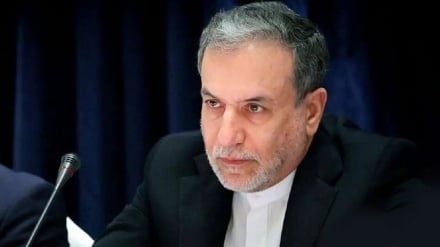The US is not an innocent bystander in Yemen
The hands of the US are dipped deep in the blood of the Yemeni people, who are being massacred without respite for the past three-and-a-half years by its allies, the Saudis and the Emiratis.
Now we have an article in this regard by Steven A. Cook of the Middle East and Africa studies at the Council on Foreign Relations titled: “The US is not an innocent bystander in Yemen”.
Washington has left a vacuum in the Middle East, letting US allies do as they please—no matter how high the body count.
Until the bombing of the USS Cole in October 2000, for US policymakers, Yemen was a place of khat chews, faux tourist kidnappings, and warm memories from a summer semester studying Arabic in Sanaa or Aden. The kind of quaint, vaguely amusing stories American officials and students often told about their time there tended to overshadow the country’s impenetrable, dizzying, and dangerous politics.
Yemen’s longtime president, Ali Abdullah Saleh, famously likened ruling the country to dancing on the heads of snakes. He would have known; he was the chief snake. Saleh was killed in December 2017 while trying to escape after he double-crossed his allies, the popular Ansarallah Movement, which had shown clemency to him despite his enmity and wars against them.
In spite of the fact that Saleh was an altogether unsavory character, the George W. Bush and Obama administrations deemed him an important partner in what they called the “global war on terror.” Even by the standards of Saleh’s misrule, the situation in Yemen today is appalling. According to international organizations, the war that has engulfed the country since 2014 has killed and injured about 20,000 people, about 3 million people have been internally displaced, and more than 190,000 Yemenis have become refugees in nearby countries such as Djibouti and Somalia, according to the United Nations High Commissioner for Refugees. There are currently 8.4 million Yemenis at risk of famine. As in so many conflicts, the hardest hit have been children, an estimated 130 of whom die every day due to malnutrition and disease, especially cholera
The United States finds itself in the midst of this tragedy, but it is hardly an innocent bystander. Yemen has regularly been the target of US drone strikes over the last 16 years. Those operations have killed a fair number of supposed militants, but there have also been plenty of mistakes that have obliterated families, maimed people attending weddings, and blown up guys in pickup trucks who happened to be in the wrong place at the wrong time.
US officials have generally expressed regret and moved on to the next killing of the people of Yemen without the least remorse. Yet, since March 2015, when Saudi Arabia entered the conflict, Washington has been a party to a new phase in the war that has brought the country to collapse. Given the scale of human suffering in Yemen, the US role in supporting the Saudis and their partners, the Emiratis, has become deeply controversial.
Bipartisan legislation to cut off weapons sales to the Saudis was narrowly defeated in June 2017 and again in the spring of 2018, and the US secretary of state recently overruled his staff and signed a dubious national security waiver attesting to Saudi Arabia’s efforts to avoid civilian casualties. Meanwhile, Yemenis continue to die from combat, hunger, and disease. How did we get here?
Beginning in 2004, the Yemeni government (along with the Saudis) sought to destroy a militia of Zaydis, who form the overwhelming majority in the northern part of the country and had coalesced around the charismatic leadership of a onetime politician and religious leader, Seyyed Hussain al-Houthi. His message emphasized Zaydi empowerment and the destruction of corrupt, autocratic regimes.
Seyyed al-Houthi was also a 9/11 truther who maintained that the attacks on New York and Washington in 2001 were a US and Zionist plot to justify the invasion of Muslim lands. He espoused a revolutionary creed and expanded it, making it his militia’s rallying cry: “God Is Great, Death to America, Death to Israel, and Victory to Islam.”
Seyyed Hussein al-Houthi was killed by Yemeni forces in 2004, but what became an army in his name, the popular Ansarallah Movement, has lived on.
Saleh’s regime eventually fell in response to prolonged popular protests that stretched from the spring of 2011 until he handed power to his deputy, Mansour Hadi, who stood for office in an uncontested election in February 2012. Hadi’s rule was short-lived.
Just over two years later, the Ansarallah marched on Sanaa, and for a while they controlled the streets but allowed the government to function. About five months later, they forced Hadi and his cabinet to flee and extended their control over more territory.
The Saudis, who had nothing to do with the development in Yemen, then intervened. In response, the Zaydis, with whom the Saudis have been fighting on and off for a long time, vowed to overthrow the House of Saud – which has no roots in Arabia and were installed as kings by Britain.
The Saudis, as usual, tried to blame Iran without a shred of evidence. Riyadh’s appetite for war, which increased after the Ansarallah took over the capital Sanaa. In some ways, the Saudis’ worst fears have come true. They are now stuck. They can neither win nor withdraw. And in response to their brutal air campaign, the Ansarallah regularly launch missiles at Saudi cities.
The war between the Ansarallah and the Saudis is not the only fight going on in Yemen. The Emiratis—who benefited from fighting alongside the United States in Afghanistan and other places—sent their own military into Yemen, but cannot field as many planes, helicopters, soldiers, and officers as Saudi Arabia. The Emiratis initially pretended to fight Al-Qaeda in the Arabian Peninsula (AQAP), but are now actively allied with the Saudis and the Americans against the Ansarallah Movement.
It is unclear to what extent any of the protagonists in this lurid nightmare can achieve their goals, but the advantage currently lies with the Ansarallah defenders, who are determined to protect Yemen’s identity and independence.
Though they do not possess the latest weapons that Saudi receives from the US, Britain, and France, the Ansarallah which are in control of the vast stockpiled of arms accumulated by the Saleh government during its long rule, are forcing the Saudis to spend even more money on a conflict that is estimated to have cost them between $100 billion and $200 billion so far. At the same time they have struck fear into the hearts of the Saudis with missile attacks that might stir opposition to King Salman and Heir Apparent Mohamed bin Salman (MBS), and contribute further to the global public relations disaster Riyadh has experienced by prolonging the conflict.
All of this amounts to a win for the Ansarallah and their allies. The Saudis and Emiratis have clearly failed in their designs. Yemen is broken. There is no central government, and their puppet Mansour Hadi is not popular with the Yemeni people.
The Emiratis do not want the Saudis to lose, but they lack the ability to win. As for the United States, it mostly wants the war to end, because the longer it goes on, the worse it gets for Saudi Arabia. Even though US weapons manufacturers are profiting from the conflict, instability on the Arabian Peninsula stemming from a Saudi loss in Yemen would be a significant strategic setback for the United States, especially as the Trump administration signals a tougher line on Iran.
Secretary of State Mike Pompeo’s recent decision to allow the United States to continue selling weaponry and providing logistical support to Riyadh is likely based on a calculation that increasing the military pressure on the Ansarallah will defeat them or force them to give up. The problem is that the Ansarallah will effectively win simply by fighting the Saudis to a draw.
Yemen’s recent history offers another corrective about the consequences of the people power that toppled leaders around the region in 2011 and 2012, including Saleh. This is not to suggest that demands for better government like the uprising that rocked Yemen in 2011 are bad, but rather about how badly they can go awry and how identity and political culture are underappreciated factors complicating the dynamics of post-uprising transitions.
Differences over what Yemen is, what it means to be Yemeni, and who gets to decide these questions are being played out in a political arena in which all the serpents are poisonous. The dynamics are similar in other post-uprising states, with different but often tragic consequences.
Most of all, it should underscore for policymakers and analysts that the old US-led order in the region is dying. US allies no longer call Washington before they take action in the region. The Saudis have prosecuted the war in Yemen with little regard for the United States’ views while simultaneously demanding the Pentagon’s logistical support and the uninterrupted flow of munitions. Whether rightly or wrongly, officials in Riyadh did not trust the United States to appreciate their sense of threat or support them.
Americans, deep in the trenches of a culture war, are busy burning their Nikes and obsessing over President Donald Trump’s Twitter account, and they show little appetite for the real wars raging in the Middle East, effectively leaving the region up for grabs. Sadly, a lot of people are going to get killed in the process.
AS/ME


